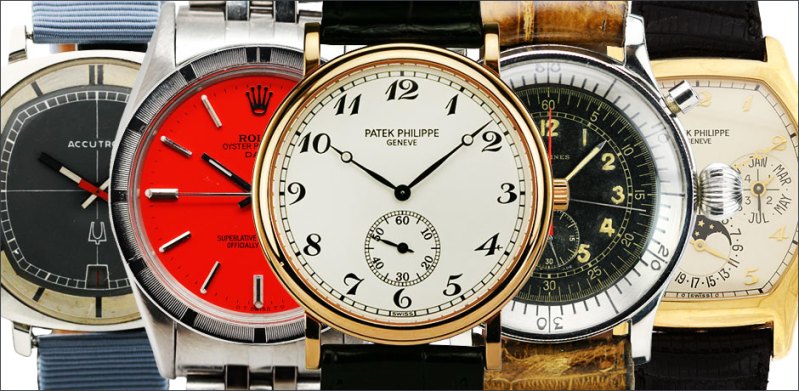
1. Know Your Style –
If you’re dressed down most of the time, then consider a diver’s watch or a watch with a cloth or slightly distressed band. If you wear a tie to work every day then a nice metal bracelet, leather or reptile strap will work best.

2. How to Research –
- Auction Houses. If you know the type of watch you want then use auction house websites to research most recent auction prices. There you can learn more history on the piece and get a sense of the watch’s market value.
- 1stdibs. If you don’t know what kind of watch you want, 1stdibs has one of the largest vintage collections of watches, all in great condition. Plus, if you find something you like on the site, you can buy it right then and there.
3. How to negotiate –
Metal: With all watches, the type of metal affects the price. Generally speaking, gold watches are more expensive than steel watches. Research the fair market price for any metal to determine if the watch is accurately price. (Keep in mind, you shouldn’t pay “gold prices” for a steel watch.)
Complications: A “complication,” anything the watch does aside from pure time-telling, will increase the price of a watch. Chronographs (stopwatches), date functions, calendar functions (including month and day of the week), and alarms are some of the most common complications. Keep in mind whether you’re buying the complications to use or just for the look, they’re great indicators of a quality watch.
Movements: The “engine” of a watch is the movement—what keeps it running. There are three major kinds of movements: manual-wind, automatic and quartz. Quartz watches were developed in the 1970s and are generally the cheapest; automatic movements are the most desirable and generally the most expensive; manual-wind watches are a nice middle ground, however you will have to wind the watch 10-15 times when you put it on.
Box and Papers: Watches have always been sold with original papers including: Certificates, marketing and information booklets and boxes. But with vintage watches these elements are frequently missing as they’ve been lost over time. It’s not a big deal if a 60-year-old watch doesn’t have these accompaniments, however if it does, that’s a bonus… and might come with an extra cost. Don’t forget to keep all these materials somewhere safe — you’re generally paying for them and if you were ever to re-sell the watch, having them will help you get a better price.





